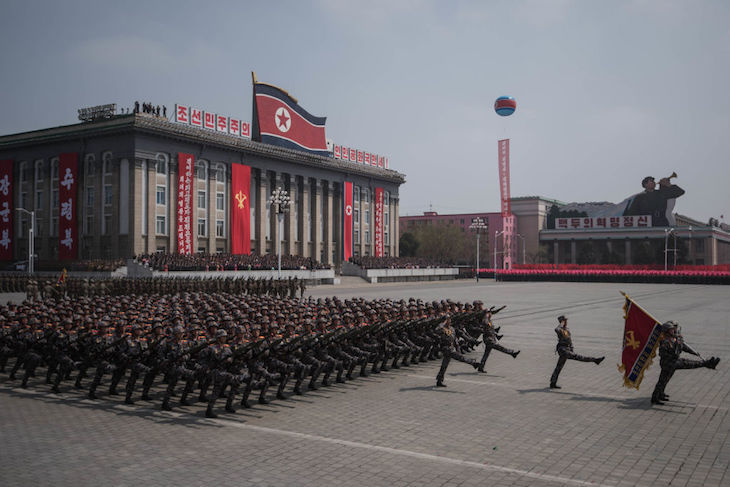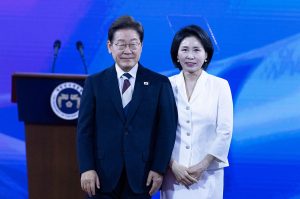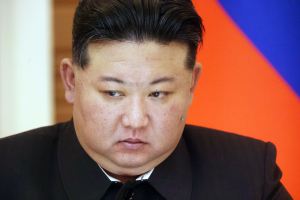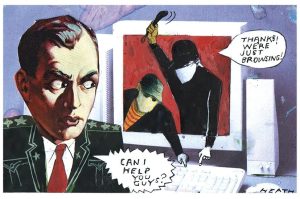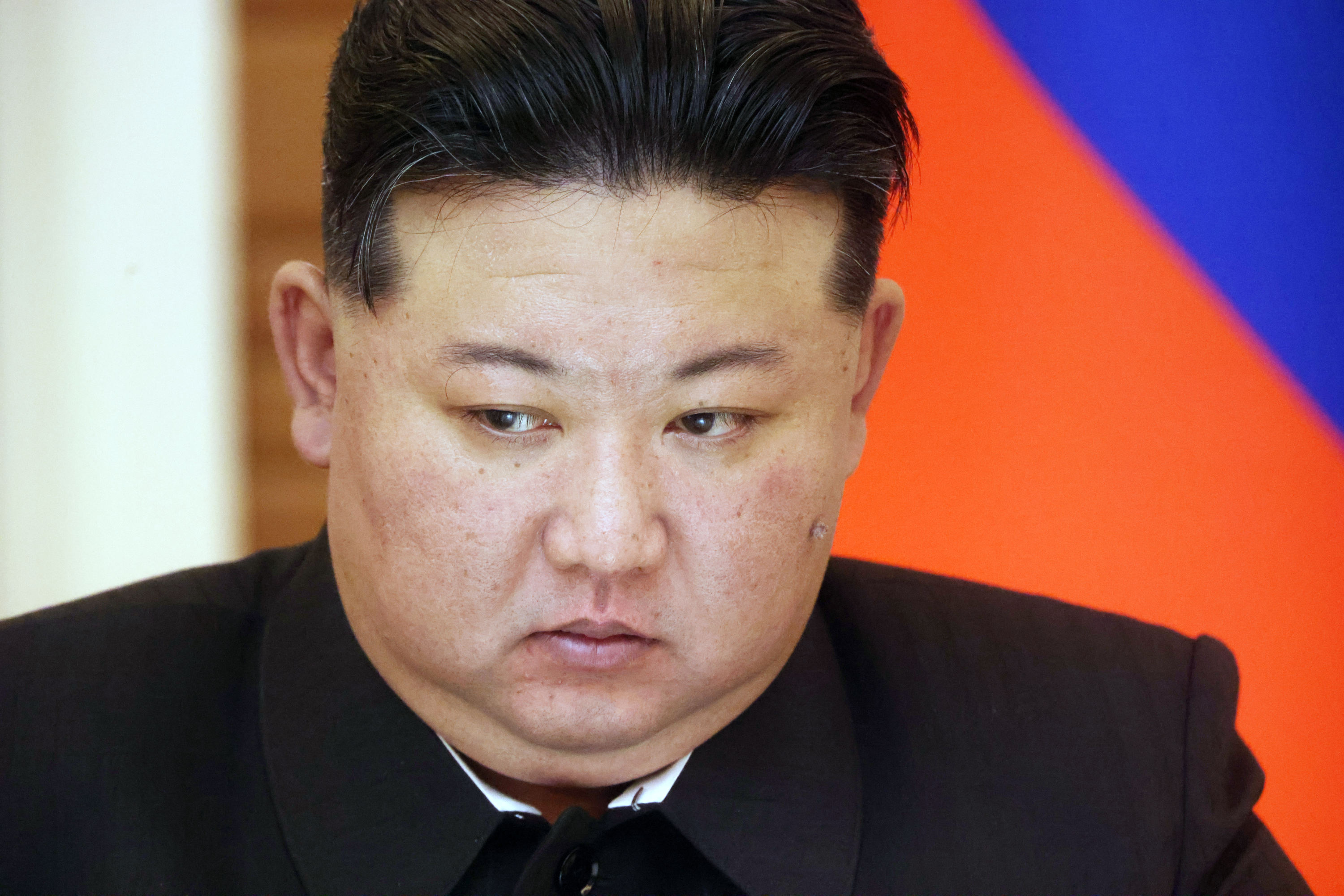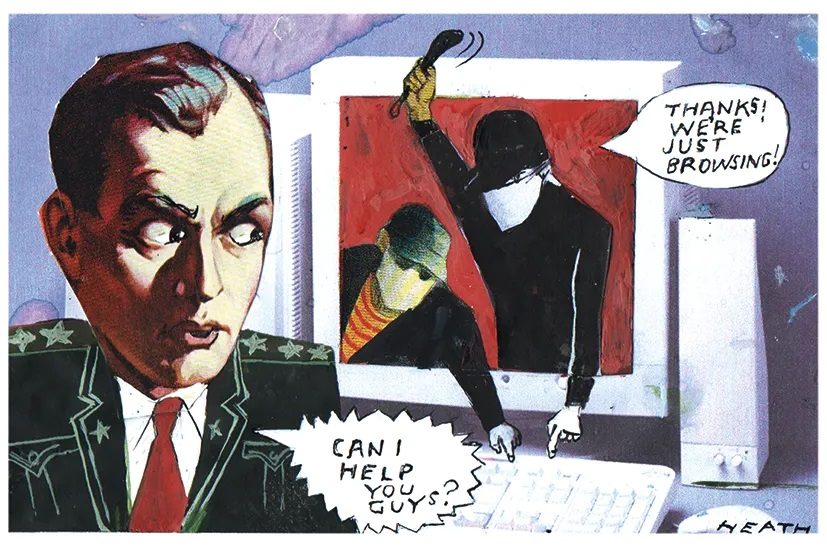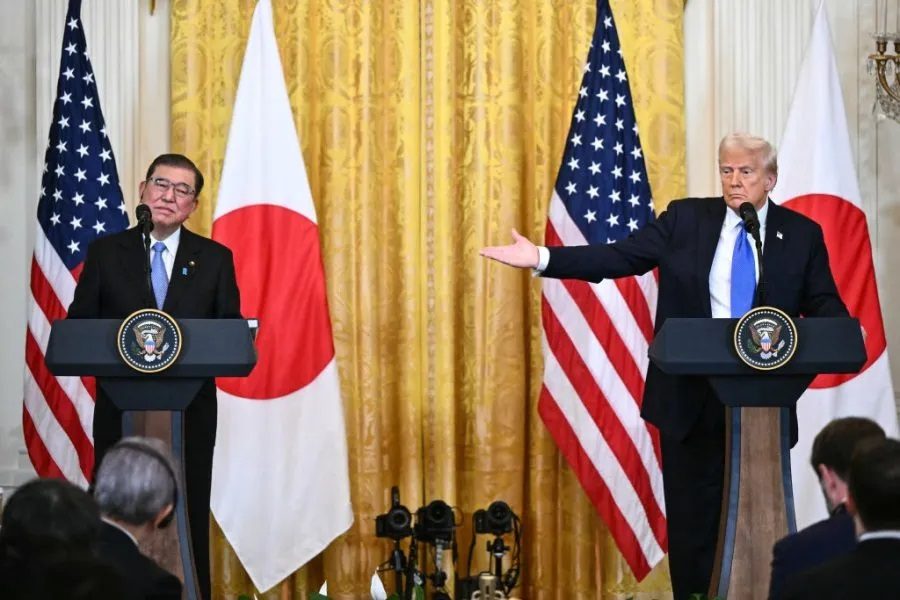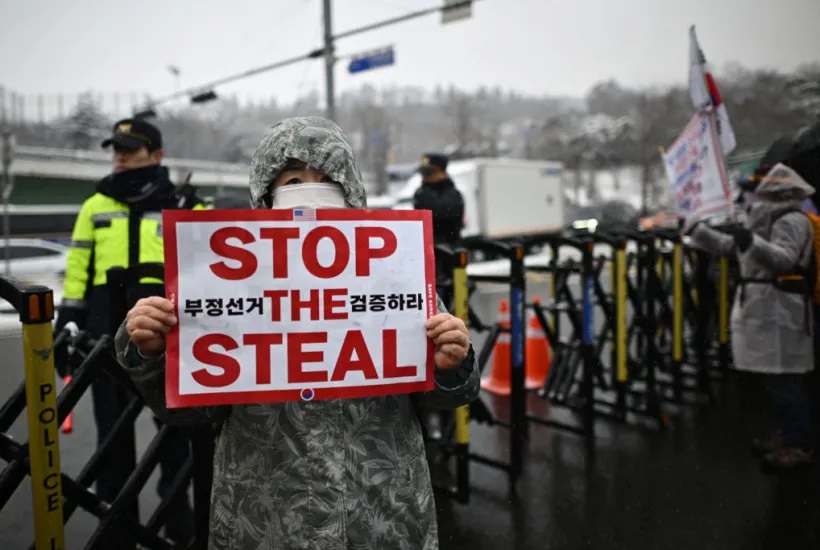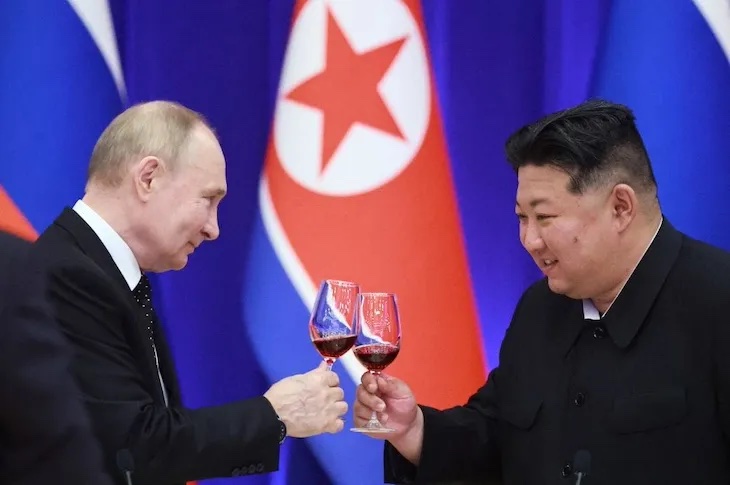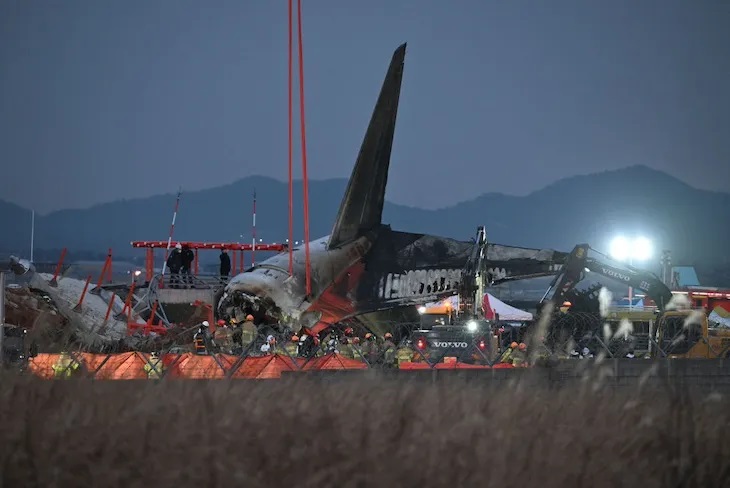As Kim Jong-un might blow up the world next year, if not this, and people are forever trying to work out what is going on in his country, perhaps it is worth describing a military parade I attended in Pyongyang a few years back.
The occasion was the centenary of the birth of the current Kim’s grandfather, Kim Il-sung, the founder of the Marxist monarchy who, despite his death more than two decades ago, remains Eternal Leader of the nation. Other attendees included some flotsam and jetsam of the Cold War, a reunion of the Axis of Evil and representatives from various other rogue states and immiserated nations.
Presuming it to be one of the better covers under which to pass as an admirer of the regime, I claimed to be a schoolteacher from England. A friend who travelled with me claimed to be an ‘agricultural adviser’ (a choice that seemed more unwise with every North Korean field we saw).
On the day, it was clear something was happening in the city because our group was bussed away far into the countryside. Eventually we arrived in a remote field where ostentatiously happy Koreans were playing a variety of intricately impromptu games involving running on a marked pitch, catching balls in a bucket and hopping. At one stage — by way of intermission — there was a dance by children dressed as pandas. Glumly sitting through this under an awning, cracking his way through a small plate of nuts provided for his pleasure, was the guest of honour, a deputy mayor of Vladivostok.
Eventually, growing ill-will made itself known both to our minder and our minder’s minder. It was made clear that we had not come to North Korea only to see ball games and a panda dance.
Finally, we were herded back on to another ancient bus that broke down only once on its way back to the capital. Traffic is not a problem in central Pyongyang, but disembarking from our bus just south of Kim Il-sung Square, it was clear that a parade was under way. We were hurried through the crowds to the bottom of a huge boulevard running down from the main parade square. There, on his balcony, Kim Jong-un was receiving the march-past and the adoration of the crowds. By the time they got round the corner to us, the soldiers were no longer goose-stepping, but otherwise the parade was as he saw it.
The word ‘cacophony’ is overused, but here was a cacophony. To our left, dressed in one of the great pastel-coloured ballgowns that the comparatively affluent Pyongyang women wear on special occasions, was a soprano soloist, accompanied by accordions and drum kit. She wailed one of those mesmeric, beautiful songs of her nation, extolling its military greatness and unparalleled leadership. All done with that fixed, stern yet ecstatic smile familiar to the world from when North Korean newsreaders announce successful nuclear tests. On each streetlamp, megaphones relayed this song, only slightly distorted, to the assembled masses.
On our right was a band of schoolchildren, conducted by a stern-faced girl of around ten, who was standing on a box. She was wielding her baton before the assembled trumpets and trombones of a couple of dozen children, all dressed in dark-blue trouser suits and red neckerchiefs. Following her determined lead, they played a succession of upbeat military marches. The combined aural effect was like being boxed about the ears.
Across the road, among the men in military uniform and the women in their sparkling dresses, further ranks of children were assembled on a tiered stand. Like others along the road, they waved bunches of the only two flowers you see in North Korea: the mauve and red flowers known as the Kimilsungia and Kimjongilia. While these orchid varieties (bred in honour of the current leader’s grandfather and father) are cultivated assiduously, those being waved were almost certainly plastic. Then the tanks began to roll.
Their best, Soviet, days were behind them, and so their arrival was heralded not only by the rumbling of the Pyongyang tarmac but by the dense clouds of black smoke that they and the hundreds of other passing military vehicles exhaled. The parade might have dragged on, had the drama not been skilfully maintained through the simple device of the paraded missiles growing larger and larger. It started with devices not much bigger than mortars. We had seen some of these the previous day, in a flower display of Kimilsungia and Kimjongilia in which many of the garden rockeries maintained the theme of nuclear war, with simulation rockets positioned for blast-off behind the fauna.
As the afternoon wore on, the vast missiles grew to the climax of what was back then their latest acquisition. I had hoped that the rumours were true and that at least some of these missiles — particularly those under light meshing — would prove to be papier-mâché. Sadly, from a few feet away at least, they looked like the real thing and grew to the size of a pretty good intercontinental ballistic missile. The children and everybody else cheered these on with unceasing joy. The soldiers peeping out of the tanks waved back at the crowds like returning victors.
Occasionally, somebody would run through the crowd to the front and shout with particular excitement. A lady dressed as a nurse came and broke down beside me, weeping with what she presumably assumed I would believe to be happiness. Nevertheless, the musical cacophony, the weeping, rumbling and marching — not to mention fumes that finally blacked out the sun — all took their toll. At some stage, fairly early on, even some of the wiser foreign visitors began to wave back at the troops with the Pyongyang crowds, some soon cheering with the best of them.
I stood back, having noticed the inevitable camera crew and a photographer in an army cap recording these reactions. I had no desire to be on the evening news as an example of the outside world’s love of Kim, but recalled a British athlete at the Berlin Olympics who later told of how he had covered his ears during the repeated ‘Sieg Heils’ for fear that he might join in. It is easy enough to get caught up in a mass rally. That’s what they’re designed for.
The people of North Korea have lived under this regime for 70 years. From the limited interaction any visitor can have with the people, it certainly seems that their isolation from the outside world remains nearly total. They have been lied to on matters great and minuscule for seven decades and, unlike the citizens of the former Eastern Bloc, have little memory of freedom. They are interchangeably told that they are the great victims, and the great terrors, of the world.
There are around 25 million people living in North Korea. If their leaders do not bring about Armageddon, but do someday fall, then there will be a need to deploy 25 million full-time psychiatrists to the Korean Peninsula. I hope someone somewhere has a plan for that.



